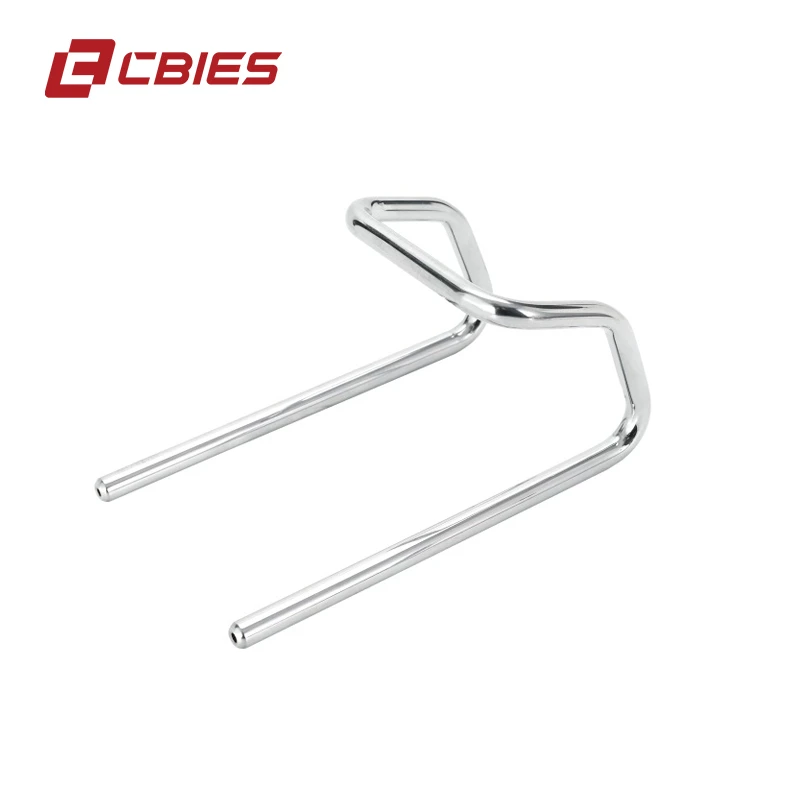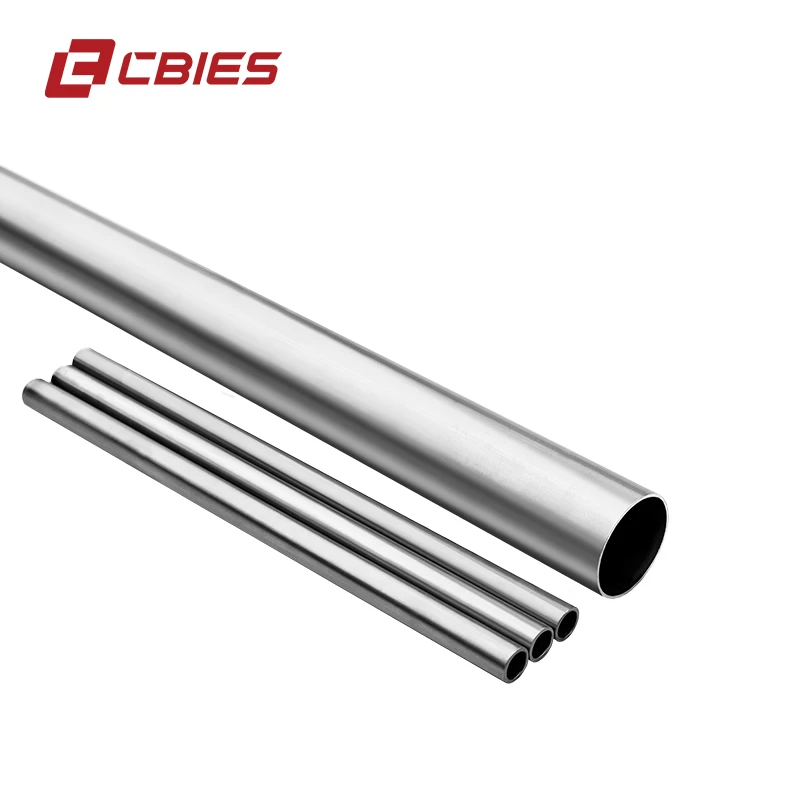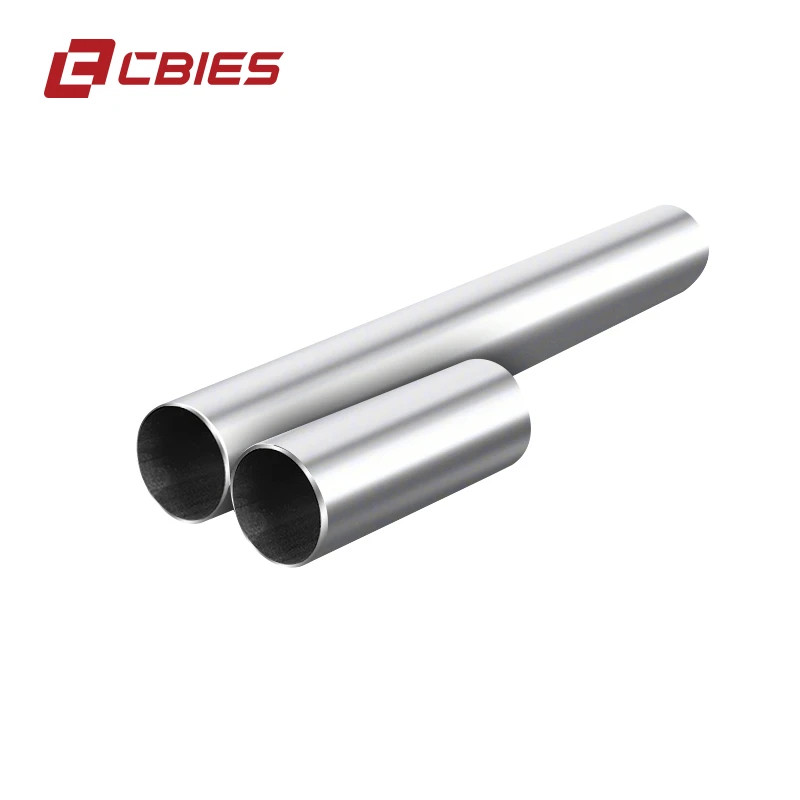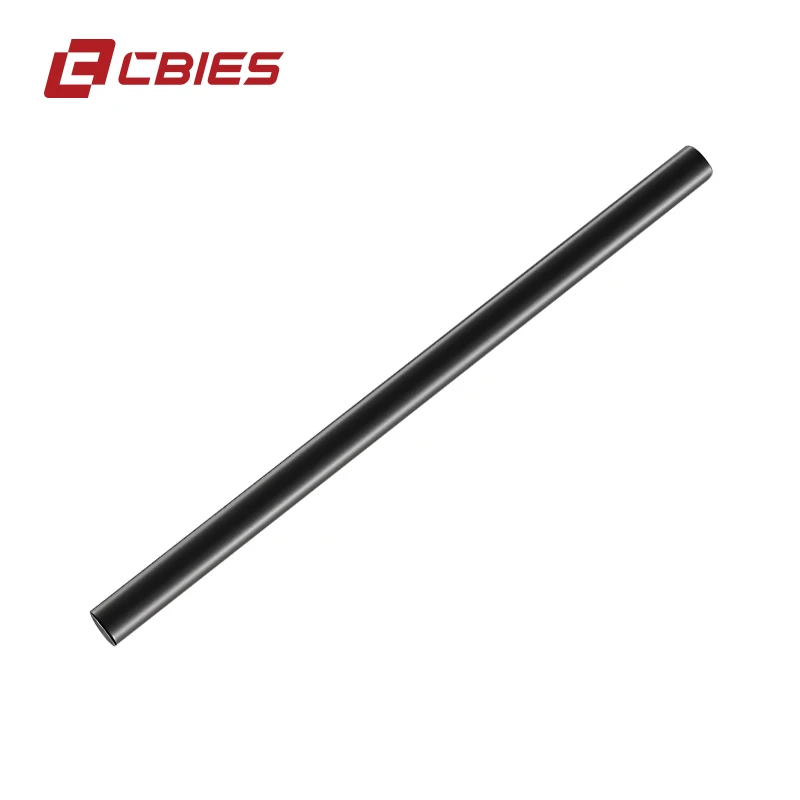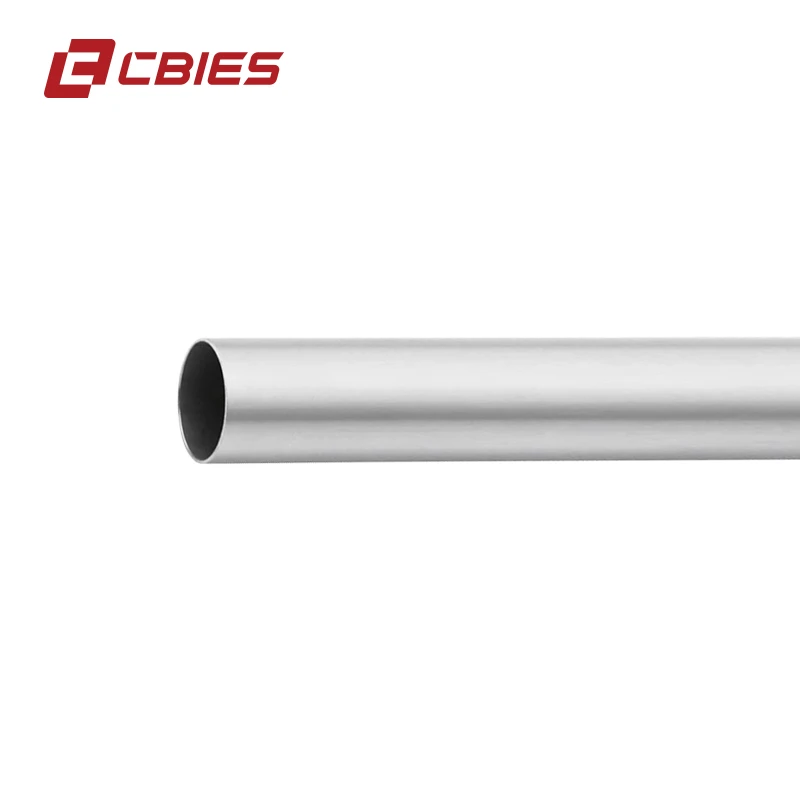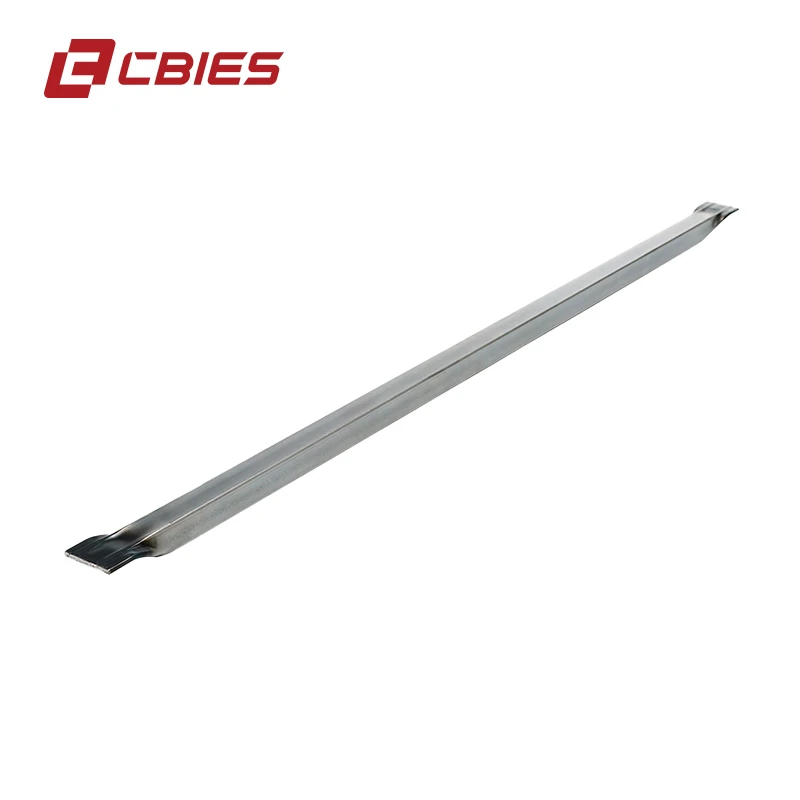Understanding the Precision in Tube Flattening: Industry Trends and Innovations
In various industrial sectors, the demand for highly specialized and precise components is ever-increasing. Among these, the process of Tube flattening has emerged as a critical capability, transforming conventional tubular structures into specific profiles required for complex applications. This precise manipulation is vital for optimizing material properties, enhancing structural integrity, and meeting stringent design specifications in areas such as heat exchangers, automotive components, and architectural frameworks. The current industry landscape is characterized by a drive towards automation, improved material science, and the integration of advanced diagnostic tools to ensure the highest levels of accuracy and repeatability. This evolution allows for the creation of components that are not only dimensionally accurate but also possess superior performance characteristics under extreme operating conditions, directly impacting efficiency and longevity across diverse industrial applications.
Modern trends in material science are profoundly influencing Tube flattening techniques, enabling the processing of high-strength alloys and composite materials that were once challenging to manipulate. This includes advancements in cold forming processes that reduce residual stress and maintain the intrinsic material strength, as well as innovations in hot forming for materials requiring higher plasticity. The integration of real-time monitoring systems, utilizing sensors and predictive analytics, is also becoming standard practice. These systems allow for immediate adjustments during the flattening process, minimizing defects and optimizing yield rates. Such technological progress ensures that the flattened tubes not only meet exacting geometric tolerances but also exhibit enhanced mechanical properties, such as improved fatigue resistance and uniform wall thickness, which are critical for high-performance applications.
Key Technical Parameters and Specifications
The performance and applicability of Tube flattening processes are defined by a range of critical technical parameters. Understanding these specifications is paramount for engineers and procurement specialists when selecting the right solution for their specific industrial needs. Key parameters often include material compatibility, the range of achievable flat thicknesses, tolerance levels, surface finish requirements, and mechanical properties post-flattening. These specifications directly influence the integrity and functionality of the final component, particularly in stress-intensive applications. For instance, achieving a consistent wall thickness after flattening is crucial for uniform heat transfer in heat exchangers, while precise dimensional control is vital for components integrated into complex mechanical assemblies.
Typical Tube Flattening Performance Parameters
| Parameter |
Description |
Typical Range/Value |
| Material Compatibility |
Stainless Steel (304, 316L), Carbon Steel, Copper, Aluminum Alloys, Titanium |
Versatile, specific to machine capability |
| Tube Outer Diameter (OD) Range |
Minimum to maximum external diameter of the original tube |
6mm - 150mm |
| Wall Thickness Range |
Minimum to maximum wall thickness of the original tube |
0.5mm - 10mm |
| Achieved Flat Thickness |
Final thickness of the flattened tube profile |
0.2mm - 5mm (depending on OD/WT) |
| Tolerance on Flatness |
Deviation from perfect flatness |
±0.05mm - ±0.2mm (or better) |
| Surface Finish |
Roughness average (Ra) achieved on the flattened surface |
Ra 0.8µm - 3.2µm (Application dependent) |
| Production Speed |
Rate at which tubes can be flattened per minute/hour |
5 - 30 meters/minute (Varies by material/size) |
Beyond these numerical specifications, aspects such as tool design, lubrication strategies, and post-processing treatments (e.g., annealing for stress relief) play a significant role in achieving desired outcomes. Companies specializing in Tube flattening often leverage advanced simulation software to predict material behavior during the flattening process, optimizing die designs and process parameters before physical production begins. This not only saves time and material but also guarantees that the final product consistently adheres to the most rigorous industry standards, such as those set by ASTM for material properties and ISO for quality management systems.
The Advanced Manufacturing Process of Tube Flattening
The manufacturing process for precision Tube flattening involves a series of meticulously controlled steps designed to transform round tubes into desired flat or near-flat profiles while maintaining material integrity and dimensional accuracy. The typical process begins with the selection of high-quality raw materials, often seamless or welded tubes made from stainless steel (e.g., SS304, SS316L), carbon steel, copper, or various alloys. These materials are chosen based on their intended application, considering factors like corrosion resistance, strength-to-weight ratio, and thermal conductivity.
The core flattening operation typically employs specialized machinery using rollers or presses. For example, in cold flattening, tubes are progressively passed through a series of precision rollers that gradually apply pressure to deform the circular cross-section into a flattened one. This method maintains mechanical properties and achieves superior surface finishes. Alternatively, for certain materials or complex geometries, hot flattening might be employed where the material is heated to a malleable temperature before forming. Post-flattening, the tubes often undergo stress relief annealing to eliminate internal stresses induced during the forming process, which is crucial for preventing cracking or deformation during subsequent use. This annealing process is carefully controlled to achieve specific metallurgical microstructures, enhancing the product's ductility and resistance to stress corrosion cracking.
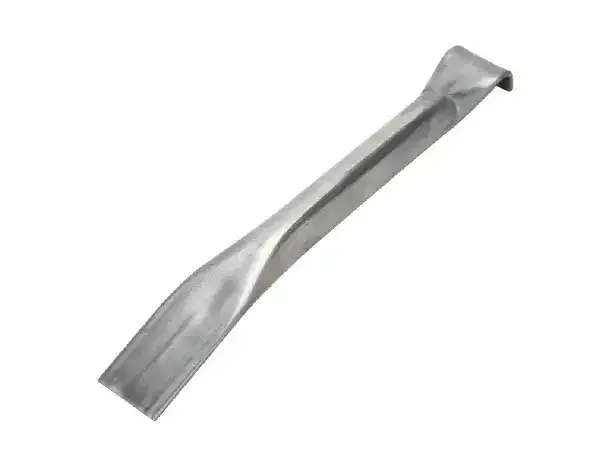
Illustration of a precision Tube flattening operation, showcasing advanced machinery.
Quality control is integrated at every stage. Initial material inspection verifies compliance with standards like ASTM A269 or A249 for stainless steel tubing. During processing, inline laser micrometers and ultrasonic testing systems monitor dimensions, wall thickness uniformity, and detect internal flaws. Final inspection includes visual checks, dimensional verification using CMM (Coordinate Measuring Machine), and mechanical property testing (tensile strength, hardness) to ensure the flattened tubes meet all specified tolerances and performance criteria, including ISO 9001 quality management standards and, where applicable, ANSI standards for specific applications. The typical lifespan of these precision-flattened tubes can exceed 20-30 years in non-corrosive environments when properly designed and installed, making them a durable choice for critical infrastructure.
Application Scenarios and Strategic Advantages
The versatility of Tube flattening extends its application across numerous critical industries, offering distinct advantages that conventional round tubes cannot provide. In the petrochemical sector, flattened tubes are extensively used in high-efficiency heat exchangers and reformers, where their increased surface area-to-volume ratio significantly improves thermal transfer efficiency. This leads to substantial energy savings and reduced operational costs. Similarly, in the metallurgy industry, these tubes are crucial for specialized cooling systems and furnace components where precise heat dissipation is paramount. Their unique geometry allows for more compact designs and optimized fluid flow paths compared to round tubes.
For industries like water supply and drainage, flattened tubes are employed in specific applications requiring compact piping, or where space constraints necessitate non-circular conduits. Their smooth internal surfaces, often enhanced through specialized post-processing, contribute to reduced fluid friction and decreased susceptibility to biofouling or sediment accumulation, leading to lower maintenance requirements and extended service life. The intrinsic structural strength imparted by the flattening process, particularly when high-grade materials are used, also enhances corrosion resistance in challenging environments, especially when combined with specialized coatings or passivation treatments. This makes them ideal for infrastructure projects demanding longevity and minimal environmental impact. The ability to precisely control the final dimensions and mechanical properties of the flattened tube ensures superior performance in demanding applications, providing a significant competitive edge.
Custom Solutions and Trusted Partnership
Choosing the right partner for Tube flattening solutions is critical, especially for B2B stakeholders who require precision, reliability, and tailored services. Reputable manufacturers distinguish themselves through their deep technical expertise, extensive experience, and a proven track record of delivering high-quality products. They offer comprehensive engineering support, from initial design consultation to material selection and process optimization, ensuring that the flattened tubes precisely match application-specific requirements. This includes evaluating material stress-strain behavior during deformation to prevent micro-cracks or excessive thinning, which is crucial for maintaining structural integrity in high-pressure or high-temperature environments.
Leading providers in the Tube flattening sector emphasize custom solutions, recognizing that off-the-shelf products often fail to meet the unique demands of specialized industries. This involves developing bespoke tooling, adapting existing machinery, and implementing advanced metallurgical treatments to achieve desired properties like specific hardness, ductility, or resistance to particular corrosive agents. Partnerships with certified laboratories for third-party testing, adherence to international standards such as ISO 9001, ASTM, and DIN, and transparent service agreements further build trust and confidence. The service lifecycle often extends beyond delivery, offering ongoing technical support, maintenance advice, and rapid response to any emergent issues, reinforcing a long-term collaborative relationship.
Application Case Studies and Client Success
The practical utility and efficacy of precision Tube flattening are best illustrated through real-world application cases. One notable example involves a leading automotive manufacturer that required custom flattened tubes for a new generation of electric vehicle battery cooling systems. Traditional round tubes provided insufficient surface contact for efficient heat dissipation within the constrained space. By implementing precisely flattened aluminum alloy tubes, the manufacturer achieved a 30% improvement in cooling efficiency, directly extending battery life and improving vehicle performance. This solution not only met stringent thermal management requirements but also contributed to a more compact and lightweight battery module design.
Another success story comes from a major player in the aerospace industry, which utilized specialized Tube flattening for structural components in satellite launch vehicles. Given the extreme conditions of spaceflight, components needed to possess exceptional strength-to-weight ratios and resistance to vibrational fatigue. Customized titanium alloy flattened tubes, engineered to exact specifications, provided the necessary structural integrity while significantly reducing overall vehicle mass. Client feedback consistently highlights the meticulous attention to detail in production, the robust quality control measures, and the unparalleled technical support provided throughout the project lifecycle. These case studies underscore the transformative impact of advanced tube flattening capabilities in enabling innovative solutions for challenging industrial problems.
Frequently Asked Questions (FAQ)
Q1: What materials can be used for tube flattening?
A1: A wide range of materials can be processed, including various grades of stainless steel (e.g., 304, 316L, 321), carbon steel, copper, brass, aluminum alloys, and titanium. The feasibility depends on material properties like ductility and the specific flattening technique employed.
Q2: How does tube flattening affect the structural integrity of the material?
A2: When performed correctly with optimized processes and post-treatment (like annealing), tube flattening enhances certain structural properties. Precision flattening minimizes material thinning at critical points and can even improve rigidity in the flattened plane without compromising overall integrity. Advanced stress analysis ensures optimal results.
Q3: What are the typical lead times for custom tube flattening orders?
A3: Delivery cycles for custom tube flattening projects vary based on complexity, material availability, and order volume. For standard requirements, lead times can range from 4-6 weeks after design finalization. Complex projects or those requiring unique tooling may extend to 8-12 weeks. We strive for transparent communication regarding project timelines from quotation to delivery.
Q4: Is there a warranty or guarantee on flattened tubes?
A4: Yes, all our precision-flattened tubes come with a comprehensive quality assurance warranty, covering manufacturing defects and adherence to agreed-upon specifications. Our products meet or exceed relevant industry standards (e.g., ISO, ASTM, ANSI). Detailed warranty terms and conditions are provided with each quotation, along with dedicated customer support for any post-delivery inquiries.
Authoritative References
- ASM Handbook, Volume 14B: Metalworking: Sheet Forming, 10th Edition. ASM International, 2012.
- ISO 9001:2015 - Quality management systems — Requirements. International Organization for Standardization, 2015.
- ASTM A269 / A269M-15e1, Standard Specification for Seamless and Welded Austenitic Stainless Steel Tubing for General Service. ASTM International, 2015.
- Kalpakjian, S., & Schmid, S. R. Manufacturing Engineering and Technology. 7th Edition. Pearson Prentice Hall, 2014.
- American National Standards Institute (ANSI) relevant standards for piping and heat exchangers.
 Afrikaans
Afrikaans  Albanian
Albanian  Amharic
Amharic  Arabic
Arabic  Armenian
Armenian  Azerbaijani
Azerbaijani  Basque
Basque  Belarusian
Belarusian  Bengali
Bengali  Bosnian
Bosnian  Bulgarian
Bulgarian  Catalan
Catalan  Cebuano
Cebuano  Corsican
Corsican  Croatian
Croatian  Czech
Czech  Danish
Danish  Dutch
Dutch  English
English  Esperanto
Esperanto  Estonian
Estonian  Finnish
Finnish  French
French  Frisian
Frisian  Galician
Galician  Georgian
Georgian  German
German  Greek
Greek  Gujarati
Gujarati  Haitian Creole
Haitian Creole  hausa
hausa  hawaiian
hawaiian  Hebrew
Hebrew  Hindi
Hindi  Miao
Miao  Hungarian
Hungarian  Icelandic
Icelandic  igbo
igbo  Indonesian
Indonesian  irish
irish  Italian
Italian  Japanese
Japanese  Javanese
Javanese  Kannada
Kannada  kazakh
kazakh  Khmer
Khmer  Rwandese
Rwandese  Korean
Korean  Kurdish
Kurdish  Kyrgyz
Kyrgyz  Lao
Lao  Latin
Latin  Latvian
Latvian  Lithuanian
Lithuanian  Luxembourgish
Luxembourgish  Macedonian
Macedonian  Malgashi
Malgashi  Malay
Malay  Malayalam
Malayalam  Maltese
Maltese  Maori
Maori  Marathi
Marathi  Mongolian
Mongolian  Myanmar
Myanmar  Nepali
Nepali  Norwegian
Norwegian  Norwegian
Norwegian  Occitan
Occitan  Pashto
Pashto  Persian
Persian  Polish
Polish  Portuguese
Portuguese  Punjabi
Punjabi  Romanian
Romanian  Samoan
Samoan  Scottish Gaelic
Scottish Gaelic  Serbian
Serbian  Sesotho
Sesotho  Shona
Shona  Sindhi
Sindhi  Sinhala
Sinhala  Slovak
Slovak  Slovenian
Slovenian  Somali
Somali  Spanish
Spanish  Sundanese
Sundanese  Swahili
Swahili  Swedish
Swedish  Tagalog
Tagalog  Tajik
Tajik  Tamil
Tamil  Tatar
Tatar  Telugu
Telugu  Thai
Thai  Turkish
Turkish  Turkmen
Turkmen  Ukrainian
Ukrainian  Urdu
Urdu  Uighur
Uighur  Uzbek
Uzbek  Vietnamese
Vietnamese  Welsh
Welsh  Bantu
Bantu  Yiddish
Yiddish  Yoruba
Yoruba  Zulu
Zulu 




